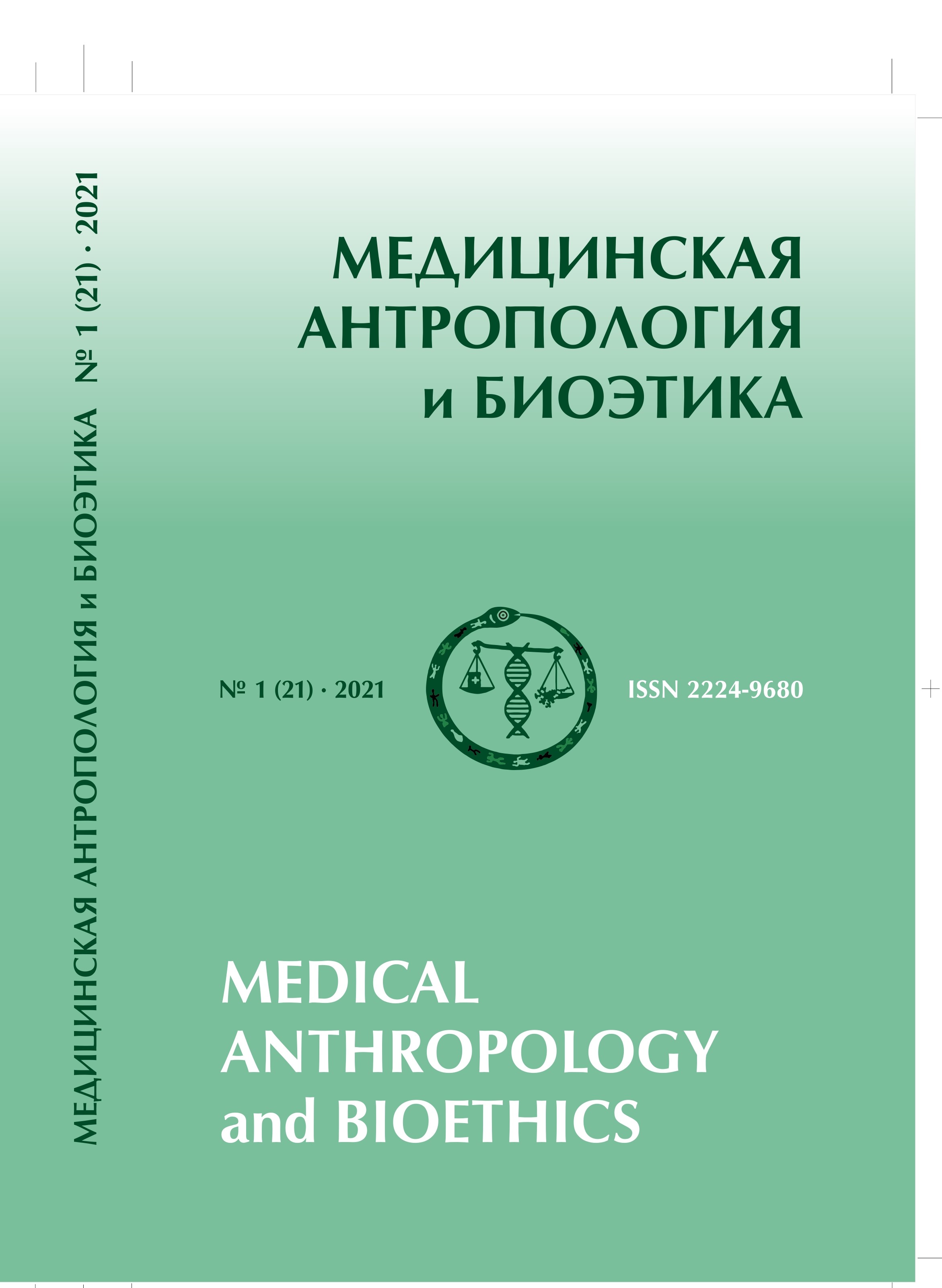ANTHROPOGENETIC ASPECTS OF REPRODUCTIVE PROCESSES STUDIES AMONG RUSSIA’S POPULATIONS
DOI: https://doi.org/10.33876/2224-9680/2021-1-21/01
Keywords:
Russia, population, reproductive structure, types of marriages, panmixia, outbreeding, inbreeding, heterozygosityAbstract
The article presents the results of an anthropogenetic study of the reproductive processes of the Russian Federation’s population in the second half of the XX – early XXI centuries. The factors influencing the reproductive processes in rural and urban populations of varying sizes are analyzed. The structure, types of formation of married couples, and possible influence on the genetic characteristics of the generation of children are considered. It is shown that descendants in interethnic families are characterized by an increased degree of individual heterozygosity, which contributes to an increase in the overall heterozygosity of populations. The trends associated with the demographic transition from the traditional reproductive type to a regulated birth rate and the associated small number of children in families are considered. The obtained data is new scientific information important for the development of programs defined by the goals of the state demographic policy of the Russian Federation and the preventive branch of medicine.
Citation link:
Spitsyna N. H. (2021) Antropogeneticheskie aspekty issledovanij reproduktivnyh processov v populjacijah Rossii [Anthropogenetic Aspects of Reproductive Processes Studies among Russia’s Populations]. Medicinskaja antropologija i biojetika [Medical Anthropology and Bioethics], 1 (21).
References
- Argun, Yu.G., Pavlenko, A.P., Spitsyna, N.Kh. (1987) Famil’no-rodovaja sistema i brachnye arealy [Family-clan system and mating areas], Abhazskoe dolgozhitel’stvo [Abkhazian longevity]. Moscow:Nauka, p. 94–100.
- Goncharova, N.N., Martyshkina, E.Yu., Kaznacheeva, T.V., Arslanyan, K.N., Adamyan, L.V., Kurilo, L.F., Sorokina, T.M., Chernykh, V.B. (2012) Mediko-geneticheskie aspekty besplodija [Medical and genetic aspects of infertility], Akusherstvo, ginekologija, reprodukcija [Obstetrics, gynecology, reproduction], Vol. 6, No 2, p. 35–40.
- Khayat, S.Sh., Andreeva, M.V., Shileiko, L.V., Ostroumova, T.V., Sorokina, T.M., Myasnikov, D.A., Chernykh, V.B., Kurilo, L.F. (2014) Analiz pokazatelej spermogrammy u muzhchin s narushenijami reproduktivnoj funkcii i polizoospermiej [Analysis of spermogram indices in men with reproductive disorders and polizoospermia], Andrologija i genital’naja hirurgija [Andrology and genital surgery], No, p. 47–53.
- Kuandykov, E.U. (1990) Genetiko-demograficheskie processy i pokazateli narushenija reproduktivnoj funkcii v gorodskih populjacijah Kazahskoj SSR, abstract of doctoral dissertation, Alma-Ata.
- Kulakov, V.I., Leonov, A.A. (eds.) (2000) Jekstrakorporal’noe oplodotvorenie i ego novye napravlenija v lechenii zhenskogo i muzhskogo besplodija: Teoreticheskie i prakticheskie podhody [In vitro fertilization and its new directions in the treatment of female and male infertility: Theoretical and practical approaches]. Moscow: MIA.
- Kuleshov, N.P. (1975) Chastota hromosomnyh anomalij u detej, umershih perinatal’nyj period [Frequency of chromosomal abnormalities in children who died perinatal], Genetika [Genetics], Vol. 11, p. 107–113.
- Kurbatova, O. L. (2004) Dinamika genofondov v populjacijah cheloveka, Dinamika populjacionnyh genofondov [Dynamics of gene pools in human populations, Dynamics of population gene pools]. Moscow: Nauka, p. 414–505.
- Kurbatova, O. L., Pobedonostseva, E.Yu., Privalova, V.A. (2005) Strategies of adaptation: Interpopulation selection differentials, Journal of Physiological Anthropology and Applied Human Science, Vol. 24, p. 363–365.
- Kurilo, L.F. (2009) Javljajutsja li reproduktivnye tehnologii, tehnologii stvolovyh kletok i klonirovanija cheloveka nashim budushhim? [Are reproductive technologies, stem cell technologies and human cloning our future?], Budushhee zhizni i budushhee nashej civilizacii [The future of life and the future of our civilization]. Moscow: Kudesniki.
- Pavlenko, A.P., Spitsyna, N.Kh. (1989) Tradicionnaja brachnaja sistema azerbajdzhancev i dolgozhitel’stvo [Traditional marriage system of Azerbaijanis and longevity], Dolgozhitel’stvo v Azerbajdzhane [Longevity in Azerbaijan]. Moscow: Nauka, p. 73–80.
- Podzolkova, N.M., Skvortsova, M.Yu., Prilutskaya, S.G. (2020) Beremennost’ posle JeKO [Pregnancy after IVF], Problemy reprodukcii [Reproduction problems], No 26(2), p. 120–131.
- Spitsyna, N.Kh. (1993) Problemy istoricheskoj genetiki [Problems of Historical Genetics], Moscow: IEA RAS.
- Spitsyn, V.A. (2008) Jekologicheskaja genetika cheloveka [Human Ecological Genetics]. Moscow: Nauka.
- Spitsyna, N.Kh., Spitsyn, V.A. (2011) Bashkiry. Istoriko-geneticheskij ocherk [Bashkirs. Historical and genetic essay], Antropologija bashkir [Anthropology of the Bashkirs]. St. Petersburg: Aletejja, p. 318–333.
- Vazquez, V., Alonso, V., Luna, F. (2011) Biological fitness and action opportunity of natural selection in an urban population of Cuba: Plaza de la Revolucion, Havana, Journal of Biosocial Science, No 44(2), p. 155–163. DOI: 10.1017/S0021932011000393.
- Vishnevsky, A.G., Dmitriev, R.V. (2016) Global’nye demograficheskie processy v HH- nachale HHI vekov [Global demographic processes in the XX – early XXI centuries], Geografija mirovogo razvitija[Geography of world development], Issue 3. Moscow: KMK Scientific Publishing Partnership, p. 197–229.

